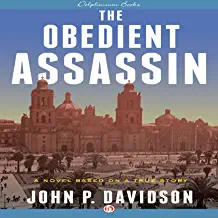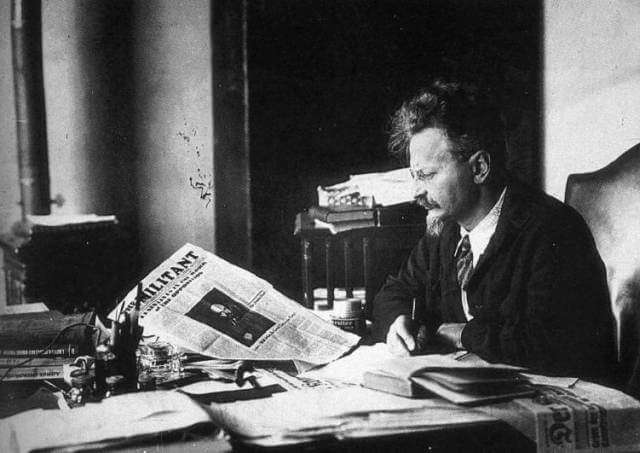The Obedient Assassin by John P. Davidson
 Paris, 1938. A young social worker from Brooklyn, Sylvia Ageloff was in the French capitol to study the language. And as a member of Leon Trotsky’s inner circle, she was also an American delegate to an organizational meeting of the Russian revolutionary’s followers. And, marked by Josef Stalin’s secret agents, Sylvia was about to become a pawn in the plot to kill Trotsky, as John P. Davidson depicts in The Obedient Assassin: A Novel Based on a True Story (Delphinium Press, February 2014).
Paris, 1938. A young social worker from Brooklyn, Sylvia Ageloff was in the French capitol to study the language. And as a member of Leon Trotsky’s inner circle, she was also an American delegate to an organizational meeting of the Russian revolutionary’s followers. And, marked by Josef Stalin’s secret agents, Sylvia was about to become a pawn in the plot to kill Trotsky, as John P. Davidson depicts in The Obedient Assassin: A Novel Based on a True Story (Delphinium Press, February 2014).
Bookish, bespectacled, and Jewish, Sylvia was swept off her feet by a handsome, mysterious aristocrat. “She fell in love,” says Davidson, “and because she was in love, she missed clue after clue, and turned a blind eye because she wanted to believe in this romance, and this man who had feelings for her.”
Sylvia knew him as Jacques Mornard, estranged son of a Belgian diplomat, but his real name was Jaime Ramón Mercader del Rio Hernandez, and even her introduction to him, by her American friend, was orchestrated by the NKVD, the Communist Party’s all-powerful police force.
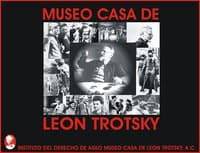 One hundred years after Mercader’s birth (on February 7, 1914 in Barcelona, Spain), historians are still puzzling out his role as an assassin. The spark for Davidson’s book came to him while he visited the Leon Trotsky Museum in Mexico City.
One hundred years after Mercader’s birth (on February 7, 1914 in Barcelona, Spain), historians are still puzzling out his role as an assassin. The spark for Davidson’s book came to him while he visited the Leon Trotsky Museum in Mexico City.
Moved by the photographs on the walls (and the bullet holes in the walls), Davidson began to wonder: what was Trotsky doing in Mexico? Why did the photographs include Diego Rivera, Frida Kahlo, and Andre Breton, three of the era’s most extraordinary artists? And how could an assassin enter a heavily guarded compound—did Trotsky know he was about to die?
Davidson soon discovered amazing first-person accounts in the Hoover Institution at Stanford University in California. “Immediately after [Trotsky’s] assassination, the Fourth International [the organization of Trotsky’s followers] asked its members who had known Ramón and Sylvia to write down their memories,” says Davidson, speaking by phone from his home in Austin, Texas.
Included were statements from Trotsky’s guards, powerful Mexican Communists, Sylvia’s sisters, and Alfred and Marguerite Rosmer, Trotsky supporters who had brought his grandson to Mexico after Trotsky’s son was murdered in France.
“It was a small file,” says Davidson. “They were not lengthy documents…but they were like the seeds. It was a pathway for me to follow: the breadcrumbs were the words.”
Davidson’s first book, The Long Road North (Doubleday, 1980), is a nonfiction account of Mexican workers crossing the border for work in Texas that began as articles for Texas Monthly magazine.
The Obedient Assassin started out to be nonfiction as well, says Davidson. “Then I realized I had to give myself leeway to tell the story. I had to fictionalize it.” The result, he believes, is probably the fullest account of Trotsky’s assassination.
The culmination of more than a decade of research, the book adds another piece of the puzzle that was the real Leon Trotsky. More famous than Lenin before the October Revolution of 1917, a decade later Trotsky had broken with Stalin and the Communist Party over the concentration of power in the party’s central committee. Trotsky thought that if power was too tightly controlled, the party would not be democratic enough.
Stalin literally erased Trotsky from photographs, says Davidson. He was called a fascist, and a self-aggrandizing traitor to the cause. “They blackened his name. And I think a lot of people in the former Soviet Union today either know nothing about Trotsky, or are confused about who he was.”
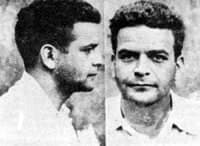 The power struggles inside the Soviet Union extended well beyond its borders. At 23, Ramón Mercader was a Communist fighting with the Republicans in the Spanish Civil War when his mother and her lover, both Stalinist agents, tracked him down to persuade him to infiltrate Trotsky circles in Paris.
The power struggles inside the Soviet Union extended well beyond its borders. At 23, Ramón Mercader was a Communist fighting with the Republicans in the Spanish Civil War when his mother and her lover, both Stalinist agents, tracked him down to persuade him to infiltrate Trotsky circles in Paris.
“Ramón really was not as militant to the degree that his mother was,” says Davidson. “Both she and her lover were larger-than-life characters. In Spain, she was quite a player in the Communist Party, and a powerful figure. She was an extremely intense person who smoked cigars, and four packs of cigarettes a day.”
 Giving in to his mother’s political passion, Ramón agreed not only to assume a false identity but also to woo Sylvia with flattery and luxury. After a year in Paris and its cafes, museums, and salons, the couple considered themselves married, against the menacing background of Europe’s closing borders, Nazi mobilization and Kristallnacht.
Giving in to his mother’s political passion, Ramón agreed not only to assume a false identity but also to woo Sylvia with flattery and luxury. After a year in Paris and its cafes, museums, and salons, the couple considered themselves married, against the menacing background of Europe’s closing borders, Nazi mobilization and Kristallnacht.
As instructed by his handlers, Ramón told Sylvia he had found a job with an international businessman and needed to relocate to Mexico City, where Trotsky was living in exile.
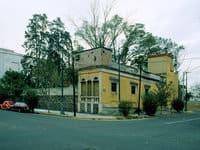 Sylvia followed Ramón to Mexico, and soon became a familiar figure at Trotsky’s heavily guarded compound, helping him with his writings. Ramon would drive her to the compound’s gate, but she specifically requested that he not attempt to accompany her inside its walls.
Sylvia followed Ramón to Mexico, and soon became a familiar figure at Trotsky’s heavily guarded compound, helping him with his writings. Ramon would drive her to the compound’s gate, but she specifically requested that he not attempt to accompany her inside its walls.
Did Sylvia have suspicions? Was it because she had once secretly followed Ramón to Brussels but was unable to find him, or his family? That she had tried to find his office in Mexico City, but discovered that the address he had given her did not exist? Or was she simply being careful, as Stalin had already succeeded in killing many of Trotsky’s associates.
In May 1940, Trotsky narrowly escaped a midnight attack by a gang of Stalinists, including the Mexican artist David Siqueiros, by hiding under the bed to dodge machine gun fire. Ramón suddenly realized he was the backup plan. “He was shocked,” says Davidson. “His mother literally betrayed him.”
 Davidson’s book has the pacing of true crime, a 48 Hours-style treatment of who, where, and when as Ramón gains Trotsky’s trust, and is invited to enter his private study on August 20, 1940. Fascinated by the relationship between the two men, Davidson fleshes out the details of Ramon’s assault with an ice axe and Trotsky’s last hours.
Davidson’s book has the pacing of true crime, a 48 Hours-style treatment of who, where, and when as Ramón gains Trotsky’s trust, and is invited to enter his private study on August 20, 1940. Fascinated by the relationship between the two men, Davidson fleshes out the details of Ramon’s assault with an ice axe and Trotsky’s last hours.
Just as powerful is Davidson’s account of the love affair between Ramón and Sylvia. To what extent was it real? How did she survive her broken heart, and the assassination of her innocence?
“That she was able to recover and move on in her life seems pretty amazing,” says Davidson, who interviewed one of Sylvia’s sisters. “She said that Sylvia never talked about it. She wouldn’t talk to the press, or her family, and everybody protected her.”
 Davidson recently wrote the January 2014 cover story for Harper’s Magazine, “You Rang? Mastering the art of serving the rich.” It’s based on his enrollment in an eight-week “butler boot camp” at the Starkey International Institute for Household Management in Denver, Colo., where he learned the finer details of supporting wealthy lifestyles, from estate management to the proper way to fold toilet paper.
Davidson recently wrote the January 2014 cover story for Harper’s Magazine, “You Rang? Mastering the art of serving the rich.” It’s based on his enrollment in an eight-week “butler boot camp” at the Starkey International Institute for Household Management in Denver, Colo., where he learned the finer details of supporting wealthy lifestyles, from estate management to the proper way to fold toilet paper.
Oddly, says Davidson, the article relates to his novel. “The story is about class, and a return to feudalism, and the Communist revolution was about class and ending it.”
Image Credits:
Leon Trotsky: www.britannica.com
John P. Davidson: www.kut.org
Trotsky’s Home: http://cayuela-cartagena.blogspot.com/ and www.delange.org
Ice Axe: http://cayuela-cartagena.blogspot.com/
Paris: Flickriver (http://www.flickriver.com/photos/fawbs/sets/72157612898668691/)
Ramón Mercader: www.murderpedia.com
Leon Trotsky Museum: http://intromuseotrotsky.blogspot.com/
Buy this Book!
Amazon